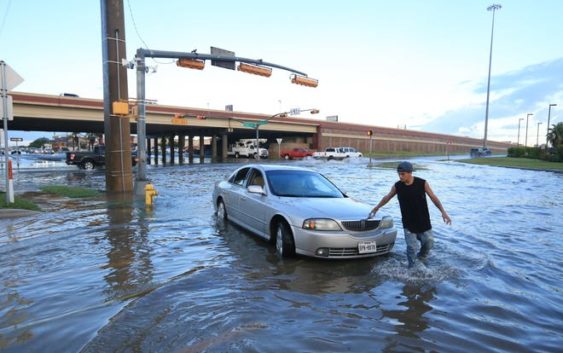- Austin adopts new map that greatly expands area at risk of wildfire
- CenterPoint Energy accelerates infrastructure improvements ahead of hurricane season
- Carolina Hurricanes playoff tickets go on sale Thursday
- Ask the Meteorologist: Why do tornadoes target Tornado Alley, Dixie Alley?
- Nonprofit closes distribution site that aided thousands after Hurricane Helene
What to do during flash flooding at home or in your vehicle

Heavy rains can inundate local rivers, creeks and streets in a flash flood. Flash flooding is the leading cause of weather-related deaths in both Texas and the nation.
The National Weather Service advises if you are in an area prone to flooding, follow local news outlets and social media to be aware of possible flood conditions. If you can safely evacuate to higher ground, do so immediately.
In a vehicle
The most important piece of advice when you encounter a flooded roadway: Turn around, don’t drown, says TxDOT.
- Never attempt to drive through deep water. As little as six inches of fast-moving water can cause you to lose control of your vehicle, including pickups and SUVs.
- Do not walk or try to swim through flood waters, whether still or moving. The water can hide hazards like trees, power lines, damaged roads or other debris.
- Use extreme caution at night when it’s harder to see flood dangers.
- Never try to move or drive around barriers at low-water crossings or flooded roadways. Tampering or moving barriers can result in fines and/or jail time.
- If your car is stuck in deep water, get out and get to higher ground if it is safe to do so. FEMA states that as little as a foot of water can lift most vehicles and two feet of water will float even SUVs and pickups.
At home
If you are stuck in your house and flood waters are getting inside, follow these tips from the The University of Texas Health Science Center at Houston:
- Put on rubber soled shoes or rubber boots. Do NOT go barefoot in your home.
- If possible, move your car off the street into the garage.
- Remove gasoline cans and flammables from the garage or put them high into the rafters of your garage.
- Grab your preprioritized list of items that must be moved higher (onto a tabletop or countertop), such as documents, photos and computers.
- Unplug all electric cords from wall sockets in anticipation of water rising over the socket.
- Turn off electricity at the breaker if you believe that water will approach sockets.
- Remove lower drawers from dressers and place higher — they swell shut if wet.
- If you have a one-story home, go into your attic while the water is still low and check for a roof exit if necessary. Bring with you any necessary tools you would need to create an attic opening to your roof.
- Keep exterior doors closed. Unless you are near a river or creek, most rising water does NOT enter through doorways, but through ground saturation. So chances are, it will come from everywhere at once. Doors need to remain closed to keep out animals and insects that are groping for places to land.
- Keep battery-operated communication devices on for updates on weather and evacuation boats that may be coming through your area.
- Do not drink water from the tap until you have been advised that the water system was not contaminated.
- If your house is flooding, your toilets won’t flush. Have a temporary “chamber pot” designated. Camping toilets are good to have on hand.
Allison Ehrlich writes about things to do in South Texas and has a weekly Throwback Thursday column on local history. Support local coverage like this by checking out our subscription options and special offers at Caller.com/subscribe
